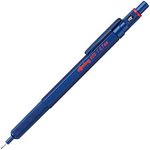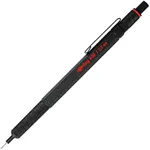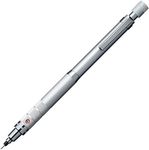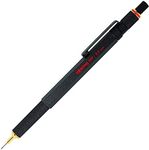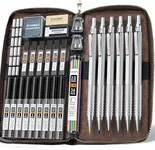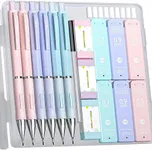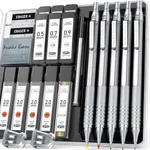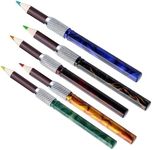Buying Guide for the Best Metal Mechanical Pencil
Choosing the right metal mechanical pencil can greatly enhance your writing or drawing experience. Mechanical pencils offer consistent line widths, no need for sharpening, and a more durable build compared to wooden pencils. When selecting a metal mechanical pencil, consider the following key specifications to ensure you find the best fit for your needs.Lead SizeLead size refers to the diameter of the lead used in the mechanical pencil. This is important because it affects the precision and style of your writing or drawing. Common lead sizes include 0.3mm, 0.5mm, 0.7mm, and 0.9mm. A 0.3mm lead is ideal for very fine, detailed work, while a 0.5mm lead is the most versatile and suitable for general writing. A 0.7mm lead is good for bolder lines and sketching, and a 0.9mm lead is best for heavy-handed writing or drawing. Choose a lead size based on the type of work you will be doing and your personal preference for line thickness.
GripThe grip of a mechanical pencil is where you hold the pencil, and it can significantly impact comfort and control. Grips can be made from various materials such as rubber, silicone, or metal, and can have different textures. A soft, cushioned grip can reduce hand fatigue during long writing or drawing sessions, while a textured metal grip can provide a more secure hold. Consider how long you will be using the pencil and whether you prefer a softer or firmer grip to determine the best option for you.
Weight and BalanceThe weight and balance of a mechanical pencil can affect how it feels in your hand and how easy it is to control. A heavier pencil can provide a more substantial feel and may be preferred for those who like a solid, stable writing instrument. A lighter pencil can be easier to maneuver and may reduce hand fatigue. Balance refers to how the weight is distributed along the pencil. A well-balanced pencil will feel comfortable and natural in your hand. Try holding different pencils to see which weight and balance feel best for you.
Lead Advancement MechanismThe lead advancement mechanism is how the lead is extended from the pencil. Common mechanisms include push-button, twist, and shaker. A push-button mechanism is the most common and allows for quick and easy lead advancement. A twist mechanism requires you to twist the pencil to extend the lead, which can provide more precise control. A shaker mechanism allows you to extend the lead by shaking the pencil, which can be convenient for quick adjustments. Consider which mechanism you find most convenient and easy to use.
EraserMany mechanical pencils come with a built-in eraser, which can be a handy feature for making corrections. The size and quality of the eraser can vary. A larger, high-quality eraser will last longer and be more effective at removing marks. Some pencils have replaceable erasers, which can be a useful feature if you do a lot of erasing. Think about how often you need to erase and whether a built-in eraser is important to you.
DurabilityDurability refers to how well the mechanical pencil can withstand regular use and potential drops. Metal mechanical pencils are generally more durable than plastic ones. Look for pencils made from high-quality metals such as aluminum or stainless steel, which are less likely to break or bend. If you need a pencil that can handle heavy use or rough conditions, prioritize durability in your selection.


